
 Jordan Deshane
The Hockey Writers
Jordan Deshane
The Hockey Writers
61
Reads
0
Comments
Sabres’ 2019-20 Analytics Autopsy: Defencemen
Now that another Buffalo Sabres season is finished – and mercifully so – many are conducting an autopsy of the past few months; and there was more bad than good. Extending the franchise-record playoff drought to nine seasons in a year when over 77 percent of teams made the postseason (not a typo), is something only this franchise can pull off.
While the wounds are still fresh, let’s look under the hood to see what went right, what went wrong, and why. We will consider individual performances on offence and defence as well as on special teams as we did with our assessment of the forward ranks. Stats are from Evolving-Hockey.
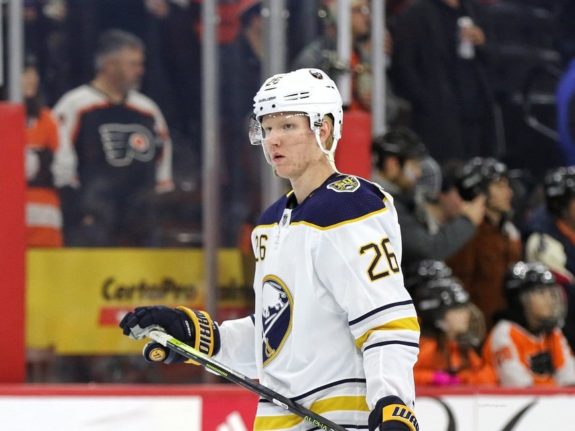
In these exercises, context is important. That being the case, we will assess forwards and defencemen based on the following on-ice stats: goals for and against (GF/GA), shots for and against (SF/SA), shot attempts for and against (CF/CA) and quality of scoring chances for and against (xGF/xGA). Players will be examined at even-strength and on special teams. At even strength, players will need to have played at least 300 minutes and on special teams at least 50 minutes. All stats will be score and venue adjusted. This will give us a good body of work.
Related: How Sabres’ Legend Taro Tsujimoto Came to Be
We will look at the top five defencemen in each category and award points based on where they finish (first is five points, second is four points, etc). We will also be looking at what they accomplished for every hour they were on the ice to help us see which players made the strongest impact. This can help us determine which players were the most effective in different situations and how they compare to their teammates. Without further ado, let’s dissect this thing and see what we have.
Strongest Offensive Defenceman
What we unearthed in this section didn’t have a surprising ending as much as it was an unexpected route to arrive there. Like the forward group, we know who the strongest offensive defenceman was and hopefully is for the foreseeable future. What’s surprising is who was there to pick up the slack for him.
Even-Strength
In our point system, the strongest offensive defenceman at even-strength wasn’t close, and likely not who you thought it would be. Marco Scandella led the way with 20 points followed by Rasmus Dahlin (12), Collin Miller (9), Henri Jokiharju (6), Jake McCabe (6), Brandon Montour (4) and Rasmus Ristolainen (3).
We knew that Scandella was having a bounce-back season. Based on what I saw, it seemed that it was from a strictly defensive perspective. He looked poised in his own end and broke up plays effectively. That couldn’t be further from the truth. He pulled off the clean sweep in all four offensive categories, placing first in goals (3.34GF/60), shots (31.99SF/60), shot attempts (57.17CF/60) and quality created (2.57xGF/60).
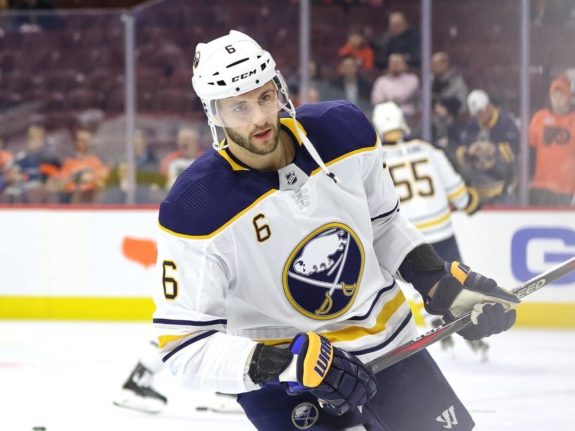
These stats weren’t just solid for the team. Among qualifying defencemen in the NHL, these stats ranked 13th, 54th, 71st and 57th out of 223, respectively. In all four categories, Scandella ranked as a low-end number one defenceman. He may not get that etched on a plaque for above the fireplace, but after a dismal 2018-19 campaign, his season was incredible.
What is mildly concerning was the performance of Dahlin. Coming off a stellar rookie season, he appeared ready to take off. The season wasn’t a massive failure, not by any means. He finished 14th in the league in points per game among defencemen who played at least 47 games. As a teenager. On a bottom-third scoring team. In the big picture, it was great.
Zoom in from the big picture, though, and there were question marks. Where was the dominant explosion we were looking for? Where were the end-to-end rushes we saw from him last season? Where was the guy that scored this goal all season?
In terms of where the ‘panic metre’ should be for Dahlin, the answer is quite low. He is playing one of the most difficult positions in professional sports on a terrible team. Combine that with learning a new system and being only 19 years old, and his solid offensive contributions are that much more reassuring.
Where the problem lies is in the unknown. The Sabres’ best offensive defenceman at even-strength was shipped off in a cap dump, leaving the 20-year-old as the heir apparent to drive the offence from the back-end. There are few I would feel more confident in being able to take on such a task than Dahlin – in fact, none. Next season, whenever that may be, will be a massive campaign for the young Swede.
While Sabres fans realize the glut of defencemen in the organization, the fact remains that few have proven to be offensive drivers in the short sample size we have under Krueger. Don’t be surprised if management decides to improve there or give Jokiharju more opportunity to grow offensively.
Power Play
The man advantage is where the Sabres saw their young cornerstone really take over. Only three defencemen on the team met the outlined criteria and Dahlin led the way with 20 points followed by Ristolainen (16) and Miller (12). Like Scandella, Dahlin led in goals (7.97GF/60), shots (54.12SF/60), shot attempts (97.65CF/60) and quality creation (6.38xGF/60).
This is going to be something the NHL needs to get used to. Dahlin was built for manning the point on the power play and distributing the puck wherever it needs to go. Although the team was in the bottom-third in efficiency, he is learning his trade and becoming more dangerous.
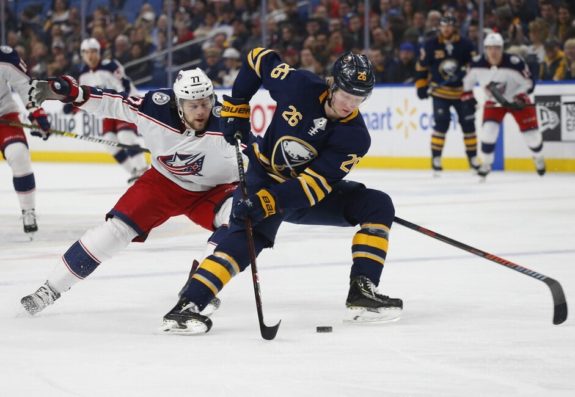
Of the 87 NHL defencemen that qualified, Dahlin ranked 24th, 34th, 30th and 48th in the metrics we looked at. This puts him squarely in the middle-upper section of the pack. While it would be nice to see him a little bit higher, there are some real positives here.
As we discussed in our article about the forward group, the power play system was flawed. The coaching needs to do a better job next season of directing players to play a more diverse game on the man advantage and get more chances from high-danger areas. That being said, Dahlin is not dependent on scheme. Although the Sabres were expected to score 6.38 goals per hour on the power play, they actually mustered 7.97 per hour when he was on the ice. He has the shooting ability and skill to out-perform what he’s presented with.
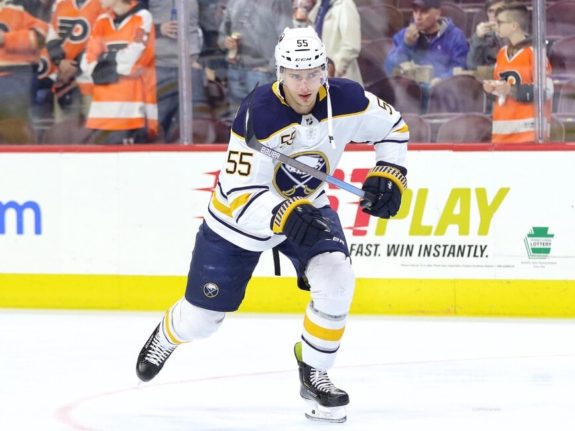
That being the case, what will happen if the coaching staff can unlock the key to this power play? If they can give the players a system that will generate better chances – say, at a top-20 rate – Dahlin could quickly emerge as a top-10 talent in the league. Given the probable addition of Dylan Cozens to the team next season, this could be a possibility.
The luxury the Sabres have, at least on the man advantage, is Ristolainen. If Dahlin ever goes down with an injury, he can adequately fill in as a replacement on the point. It would be interesting to see Miller or Jokiharju get an increased opportunity in this capacity, just to see what they have in them. In any event, the Sabres’ power-play blue line will be admirably patrolled for the foreseeable future.
Top-5 Offensive Defencemen
This exercise really showed that offensively, the Sabres have three tiers of defencemen. The first tier is Dahlin (32). Well below him were the trio of Miller (21), Scandella (20) and Ristolainen (19) followed by the third tier of Jokiharju (6), McCabe (6) and Montour (4).
While an elite top-tier is great, the lack of offensive firepower on the Sabres is concerning – especially since one member of the second tier was traded away for nothing. There is room for growth from the third tier. Although Montour probably is what he is at this point, proper deployment on the right side could help boost his numbers. Jokiharju showed offensive promise with the Chicago Blackhawks and could build on that next season.
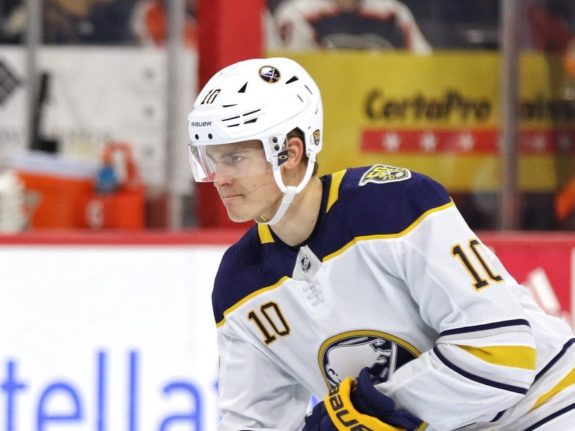
The Sabres will have an interesting decision to make at the draft. If they are picking seventh or eighth, there will be some enticing forward prospects available. They could opt to make a play for a defenceman in Jamie Drysdale or Jake Sanderson to build their offensive power from the back-end.
Related: Grading the Red Wings’ Last 5 First Rounds
Regardless, the team is privileged to have Dahlin patrolling the defensive end. If these first two seasons were about working out the kinks and adjusting to the pro game, the sky is the limit for him. If a little more depth can be found to provide offence, the defensive core can become a strength. That depth may already be in-house.
Strongest Defensive Defencemen
We’ve now reached the point where we can look into the defencemen that did what they were supposed to do: defend. In 2019-20, the Sabres turned a new leaf on defence. No longer were they more interested in joining the rush and creating chances like they were under Phil Housley. Now, they focused on their own end and were able to put up some solid numbers.
Even-Strength
While the offensive side had some stand-out performances from defenders, the defensive side had much more parity. There were fewer stars but a much stronger overall system in place.
At even strength, a familiar name found it’s way to the top of the list. Scandella led the way once again with 16 points followed by McCabe (14), Jokiharju (11), Miller (7), Montour (5), Dahlin (5) and Ristolainen (2). There’s much to unpack with these numbers.
First of all, that Scandella left the organization for a fourth-round pick is ludicrous. At even strength, he was a machine in the offensive and defensive zones. This was illustrated by the fact that he was later traded by the Montreal Canadiens for a second-round pick. When you continually pile up small losses like this one, it can be quite damning to your managerial career as Jason Botterill found out.
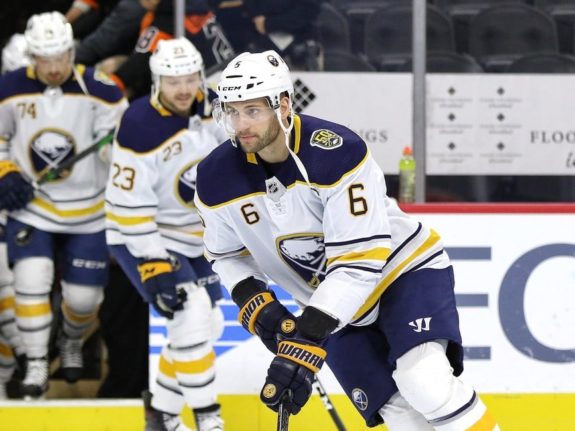
Among individual team leaders, Montour finished first in preventing goals (2GA/60), McCabe led in suppressing shots (27.5SA/60), Scandella led in limiting shot attempts (49.66CA/60) and McCabe led in negating quality (2.06xGA/60).
These numbers were very strong. Among 223 qualified defenders, the Sabres’ leaders ranked 28th, 27th, 20th and 22nd. Those are elite results and speak to the strength of this coaching staff: defence.
The outlier in this examination appears to be Montour. While he did well not getting scored on, he did not appear in the top-5 of any other category. His results were good but the process could lead one to believe they’re not repeatable.
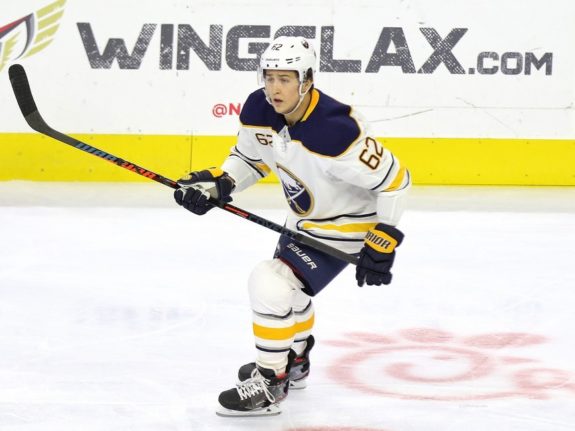
McCabe finished in the top-2 in each category except goals against. This implies that he was getting some tough bounces and soft goaltending behind him. The process leads us to believe better results are ahead. He could conceivably fill the defensive void left by Scandella. The question is, who would fill in for McCabe?
My money is on Jokiharju. He has the brain and the speed to play effectively. At only 21 years of age, he has miles of growth and development ahead. With a long offseason of development and more experience in Krueger’s system, he could be the peanut butter to Dahlin’s jam.
The one player that anyone with an ounce of respect for analytics will not be surprised about is Ristolainen. Of the Sabres’ regulars on the back-end, he was the weakest link. I understand that he’s rugged, skilled and plays with an edge, but the fact remains that the more time he spends on the ice, the more likely the team is to lose. If they could find any takers at this point, they should move him for forward help.
Penalty Kill
The penalty kill continued to tell the story we have been telling about this coaching staff. While being elite defensively at even strength, they are mediocre on special teams.
The team was led by McCabe who finished with 19 points followed by Ristolainen (14), Montour (12), Jokiharju (9) and Scandella (6). Like on the offensive side, Scandella was strong at even strength and hardly used on special teams.
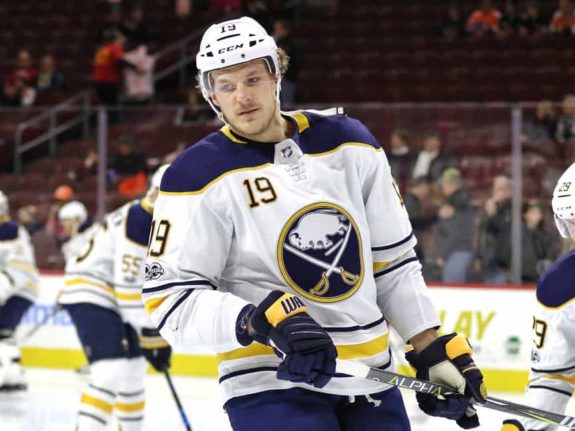
McCabe was something special on the penalty kill. He led the team in limiting shots (52.65CA/60), diminishing shot attempts (94.51CA/60) and minimizing quality (6.49xGA/60). Montour again led in mitigating goals against (8.87GA/60) with McCabe finishing second.
Among 152 qualifying defenders, the Sabres’ leaders ranked 72nd, 67th, 61st and 123rd. This looks like another instance of not getting the help they needed in goal. While they were not the best penalty-killing team, they deserved better than the results they received.
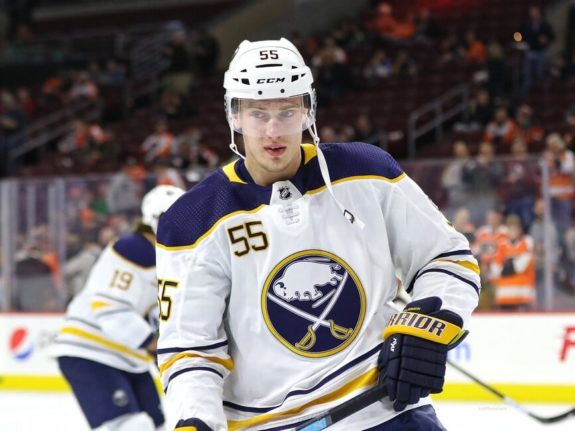
While McCabe was the bonafide leader among defencemen, Ristolainen showed well in these circumstances, too. He was useless at even-strength but came through when his team needed him on the penalty kill. Sell that to whatever team you try and move him to.
Having McCabe back as the anchor on the penalty kill will mean good things for the unit next season. If management decides move on from one of Montour or Ristolainen, Jokiharju could fill the gap as he continues to grow and mature.
Top-5 Defensive Defencemen
After analysis, the results on the defensive side appear more promising than the offensive ones. While there is still a dominant defensive leader, there is much more parity in the strength of this team from this perspective.
Combining both even-strength and penalty kill, McCabe led the way (33) followed by Scandella (22), Jokiharju (20), Montour (17) and Ristolainen (16). With Scandella gone, the team can still boast four solid contributors who can keep the puck out of their net.
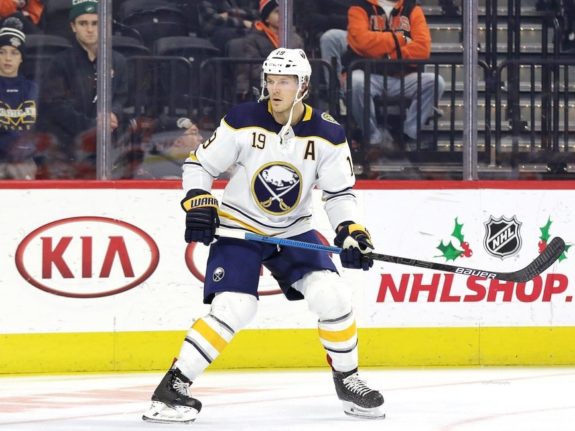
What should get Sabres fans excited here is Jokiharju. The young defender was touted as a dynamic offensive piece when he was brought in. That aspect of his game didn’t come to fruition this season. What did emerge was a sound defensive game. If he continues to build on this foundation and his confidence grows, he could become the complete package for the Sabres.
Sabres’ Top-5 Defencemen
This study of the defenders helped us better understand the coaching staff. They were a strength in teaching the system they wanted the team to play at even strength. On special teams, however, they continued to struggle.
Overall, the best defenceman on the team by our metrics was Scandella (42) followed by McCabe (39), Dahlin (37), Ristolainen (35) and Miller (28). There are positives and negatives to be found throughout the unit.
Related: Lightning – 5 Worst ‘Yzerman-Era’ Draft Picks
The positives begin with the youth of the defence. Dahlin and Jokiharju have taken solid strides in their young careers and look to be sound contributors for seasons to come. Even veterans like McCabe, Ristolainen and Miller are still under 30 and in their primes. If this group can continue to build on the success they found this season, they can be a bright spot going forward.
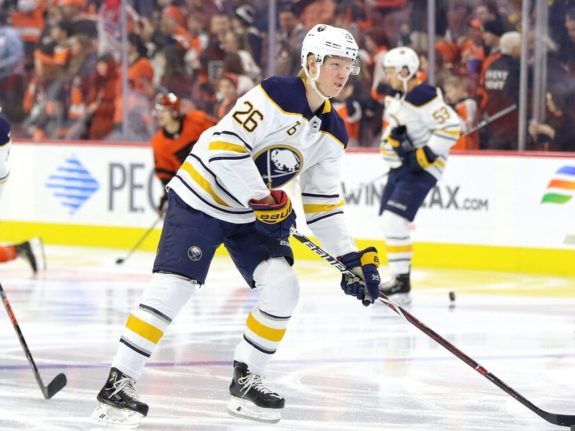
On the negative side, Scandella looked to be fitting in nicely in Krueger’s system. Moving him to make space for Michael Frolik – essentially nothing – set them back a bit. There are players that could step up and fill in next season but he looked to be a reliable part of this system.
Dahlin’s defensive play this season was also a little concerning. To be clear, he wasn’t drafted to stand in front of his net and block pucks all night. Still, as great as his offence looked, he mustered only five of a possible 40 points in our point system in defensive play. This is not a reason to sound the alarm, but the coaching staff needs to find a way to help him continue to blossom offensively while using his skill and edge to defend properly.
The coaching staff also needs to find a way to help Dahlin be more effective at even strength. He’s already an elite weapon on the man advantage. Most of the game is played at even strength, though. He will only do what he is told. Next season, they need to have fewer dump-ins and a longer leash for him to create with his skates and brain. He is a rare breed with special skills. Let him use them.
Defensive Plan Going Forward
Stop me if you’ve heard this before: Ristolainen needs to be traded. It really doesn’t matter how you slice it. Of the 40 available points on special teams, he accumulated a respectable 25. At even strength? Five. FIVE. He was neither effective offensively nor defensively. He merely existed. If there is another general manager who will offer you an even-strength contributor of any kind, you should take them up on their offer.
McCabe should be used in the same way he was last season. In a sheltered role and on the penalty kill, he was very effective. He can’t be relied upon to provide offence but can be very useful defensively.
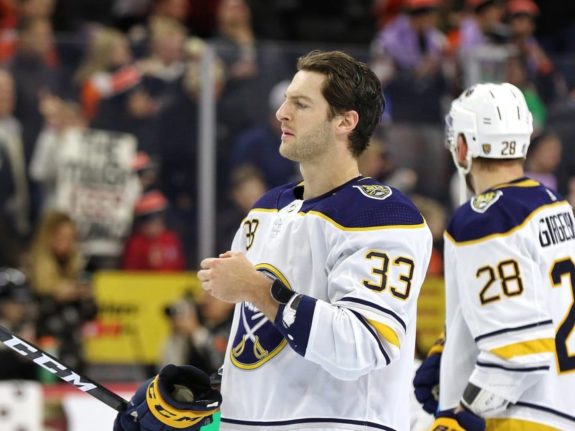
Miller cannot be benched as much as he was last season. He needs to be given a real opportunity with one consistent partner and stay there. Playing him in a depth role with McCabe would provide a nice balance on both sides of the puck and help both players to find a niche where they can positively contribute.
Although the defence has long been an area of depth for the team – to the point of being a logjam – that will not be the case next season. The departure of Scandella and Lawrence Pilut opens up some room on the left side. The Sabres should look to add a piece to that side this offseason.
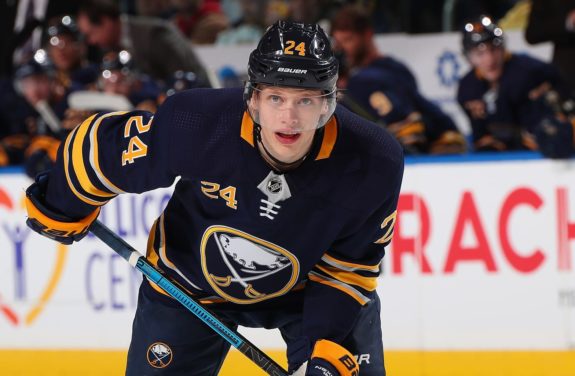
It would be advantageous for them to find another offensive driver. Dahlin will have the onus put on him offensively, but he will need support. One more offensive threat on the left side for the second pairing would not hurt this team.
All things being equal, this unit and coaching staff seemed to work pretty well together. The synergy from a defensive perspective was solid. There are improvements that could be made, but the group was more than adequate at making it hard to score against them.
Coaching Enhancements Needed on Special Teams
The long offseason may benefit the Sabres this time around. The coaching staff will need every minute of it. On both sides of the puck, they were presented with playmakers and they were able to use them to their strengths at even strength. When it came to special teams, however, something changed.
Winning the special teams game could be huge for this team. If they were to increase their power play and penalty kill goal rates from 23rd and 30th (respectively) to 15th in the league, that would net a differential of 19 goals! For a team that suffered 16 one-goal losses this season, that’s significant. They don’t need to be amazing. They just need to be average.
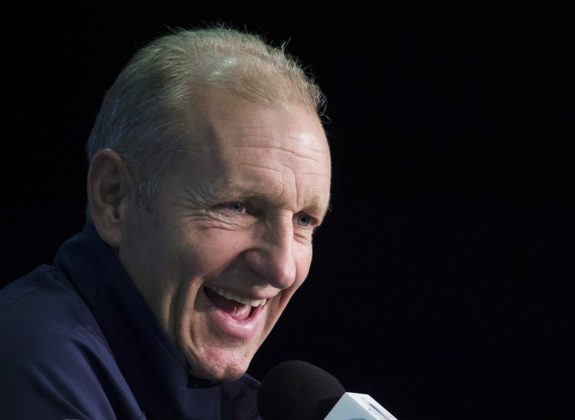
The team is bereft of scoring depth in the forward ranks. If the defence can be used to better drive offence and make things harder for the opposition, that will mean good things for the Sabres. Krueger’s staff needs to find a way to encourage offence the way Housely did without completely abandoning defensive assignments.
This will no doubt be an interesting few months for the organization. After the upheaval of last week, we really don’t know which direction things are going to go. The defence is mostly intact. With a little building and some changes in mentality, they could be the driving force that pushes the Sabres out of the mire they’ve buried themselves in.
The post Sabres’ 2019-20 Analytics Autopsy: Defencemen appeared first on The Hockey Writers.
Popular Articles

















































 Blackhawks Chicago
Blackhawks Chicago Panthers Florida
Panthers Florida Penguins Pittsburgh
Penguins Pittsburgh Rangers New York
Rangers New York Avalanche Colorado
Avalanche Colorado Kings Los Angeles
Kings Los Angeles Maple Leafs Toronto
Maple Leafs Toronto Bruins Boston
Bruins Boston Capitals Washington
Capitals Washington Flames Calgary
Flames Calgary Oilers Edmonton
Oilers Edmonton Golden Knights Vegas
Golden Knights Vegas Islanders New York
Islanders New York Sabres Buffalo
Sabres Buffalo Red Wings Detroit
Red Wings Detroit Flyers Philadelphia
Flyers Philadelphia Senators Ottawa
Senators Ottawa Lightning Tampa Bay
Lightning Tampa Bay Devils New Jersey
Devils New Jersey Hurricanes Carolina
Hurricanes Carolina Blue Jackets Columbus
Blue Jackets Columbus Predators Nashville
Predators Nashville Wild Minnesota
Wild Minnesota Blues St. Louis
Blues St. Louis Stars Dallas
Stars Dallas Jets Winnipeg
Jets Winnipeg Mammoth Utah
Mammoth Utah Sharks San Jose
Sharks San Jose Canucks Vancouver
Canucks Vancouver Ducks Anaheim
Ducks Anaheim






